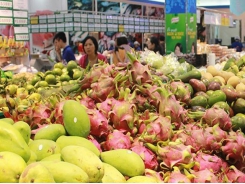Design a crop cover strategy

Agricultural practices that degrade the soil are responsible for a host of problems: erosion, nutrient runoff, waterlogging, acidification, compaction, crusting, salinisation, nutrient depletion, leaching, organic matter loss, toxic accumulation, and desertification.
To sustain or regenerate soil health, farmers must actively manage soil’s physical, chemical and biological components. This in turn will promote plant, animal and ultimately human health.
Designing a crop cover strategy is essential, says Barry Fisher, soil health specialist at the US department of agriculture in Indianapolis.
Barry encourages farmers to:
Keep the soil surface covered and not destroy ground cover every year or every second year by tilling. “Proper soil cover results in moderate soil temperature. In fact, during the hot months it cools the soil for longer periods,” notes Barry.
Use a diverse crop rotation programme, because the whole becomes more beneficial than the sum of the parts. “Diversity above the ground provides continuous living roots, which sustain soil life, increase diversity below the ground and feed the soil,” explains Barry.
Plan their rotation systems strategically. When choosing a cover crop, the farmer should understand what they are planting, how it’s growing and how it can complement their next crop.
Soil should have the ability to withstand the forces of water. Without the desired biological components, the soil contains insufficient aggregates to ‘glue’ the soil particles together. As a result, it will not retain water well; water will either run through it or off it, causing erosion.
Có thể bạn quan tâm
Phần mềm

Phối trộn thức ăn chăn nuôi

Pha dung dịch thủy canh

Định mức cho tôm ăn

Phối trộn phân bón NPK

Xác định tỷ lệ tôm sống

Chuyển đổi đơn vị phân bón

Xác định công suất sục khí

Chuyển đổi đơn vị tôm

Tính diện tích nhà kính

Tính thể tích ao hồ



 Farmers take losses in tilling rice
Farmers take losses in tilling rice  Vietnam should apply new tech to agriculture: experts
Vietnam should apply new tech to agriculture: experts